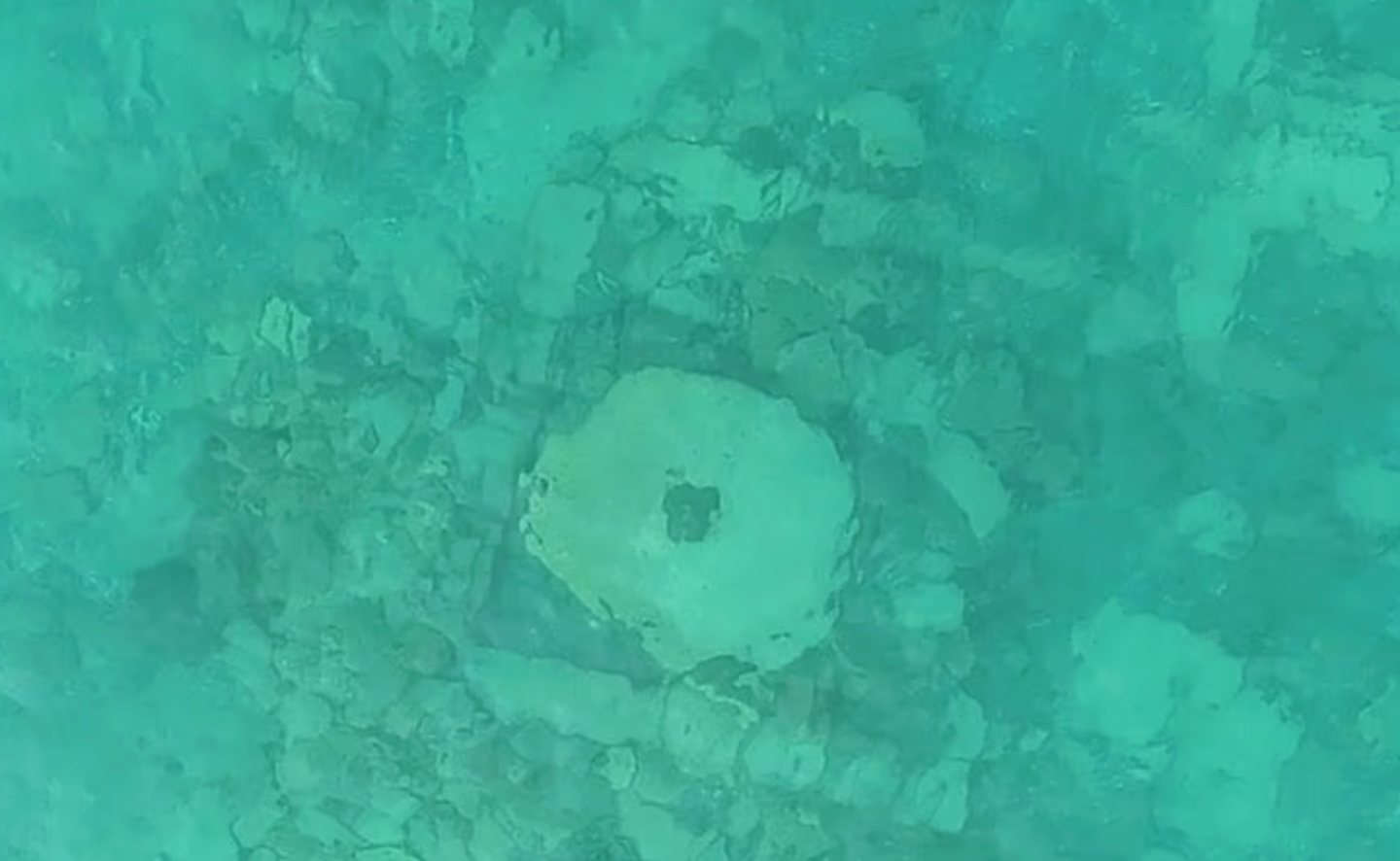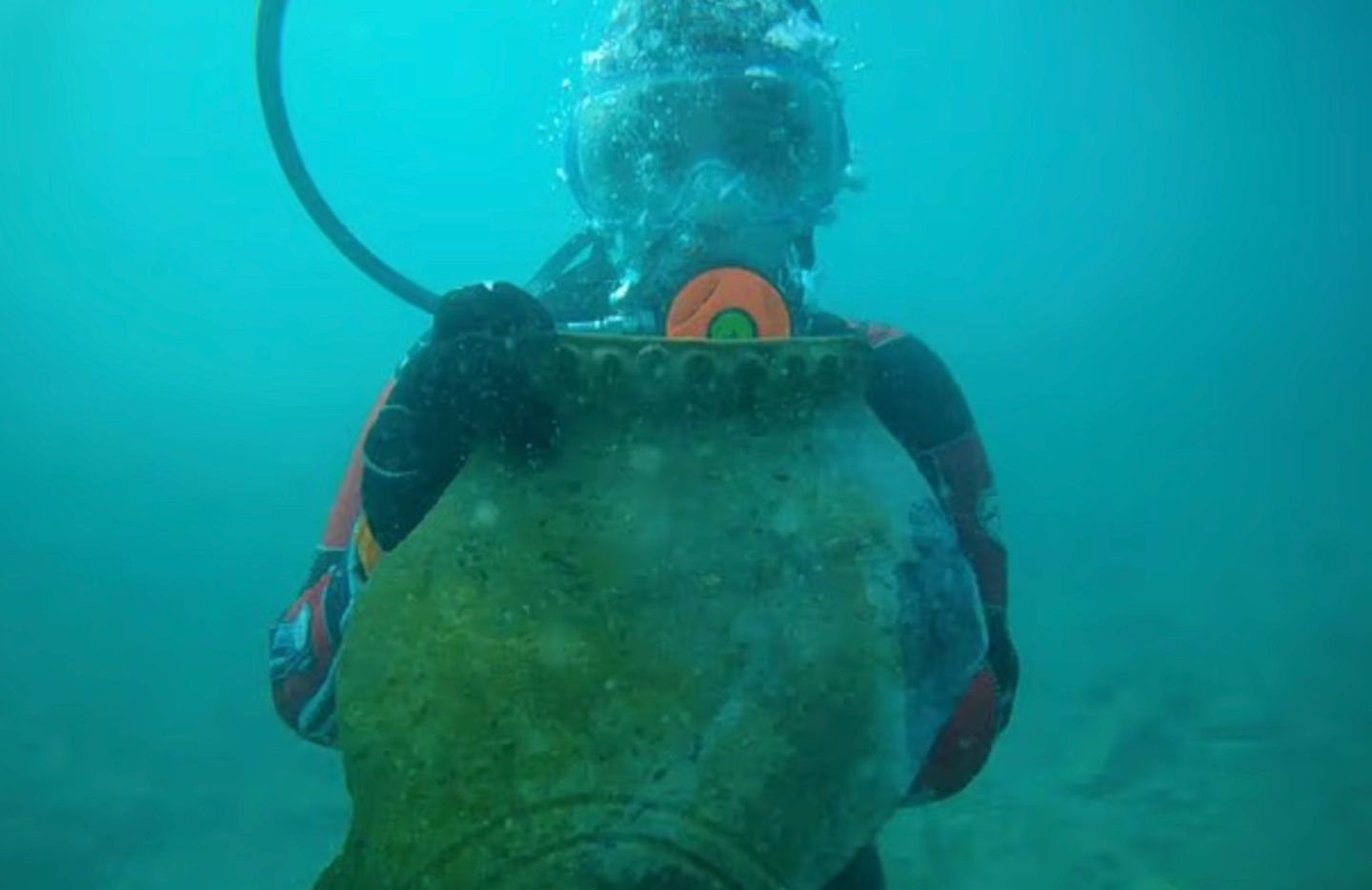Submerged city discoveries always capture the imagination, and the recent find in Kyrgyzstan is no exception. Archaeologists have revealed traces of an Atlantis-like settlement hidden beneath Lake Issyk Kul for over five centuries. This extraordinary discovery provides new insights into medieval civilizations and the ancient Silk Road, shedding light on how thriving communities could vanish underwater yet leave clues for modern researchers to uncover.

Archaeologists from the Russian Academy of Sciences have uncovered a remarkable submerged city in Lake Issyk Kul, located in the western Tianshan Mountains of Kyrgyzstan. Known as the eighth deepest lake in the world, Lake Issyk Kul has long intrigued historians and geologists alike. Its strategic location along the ancient Silk Road made it an essential stop for traders and travelers moving between Europe and Asia. The new findings indicate that a significant settlement once flourished here, providing evidence of a well-organized medieval community.
The research team discovered a medieval burial ground and the remains of multiple buildings during their underwater surveys. The structures suggest a variety of functions, possibly including a Muslim prayer house, bathhouses, and several schools. These early insights reveal that the settlement may have been a bustling hub, both culturally and commercially. Valery Kolchenko, leader of the expedition and researcher at the National Academy of Sciences of the Kyrgyz Republic, explained that the settlement’s size and complexity point to its status as a city or perhaps a major trading center along the Silk Road.
A spokesperson for the Russian Geographical Society emphasized the significance of the find, stating that it confirms that an ancient city once existed at the lake site. This submerged settlement challenges previous assumptions about medieval urban planning in Central Asia and highlights the rich cultural heritage that the region has preserved beneath the waters.
The expedition focused on four distinct underwater zones to map and understand the submerged structures. In the first area, researchers found brick constructions alongside a mill likely used for grinding flour. This discovery indicates that the settlement not only served religious and educational purposes but also supported daily life through food production, emphasizing the community’s sophistication.
The second underwater zone revealed stone structures, wooden beams, and a Muslim necropolis. These findings shed light on the social and cultural practices of the residents, illustrating a community deeply rooted in faith and tradition. The presence of such burial sites helps historians piece together the customs, beliefs, and hierarchy of the population that once lived in this thriving city.
In the third zone, evidence pointed to settlement expansion. Archaeologists uncovered another burial ground, suggesting that the community continued to grow and adapt over time. The repeated use of areas for burials highlights the settlement’s long-standing habitation and provides a timeline for researchers to study its evolution.
The fourth zone contained round and rectangular mudbrick structures, hinting at a larger, more organized settlement than previously believed. These structures suggest residential areas and potentially public or commercial buildings, revealing a city built with deliberate planning and architectural foresight. This level of organization speaks to the settlement’s importance along the Silk Road, where commerce, culture, and social interactions would have been central to daily life.
Kolchenko noted that the settlement likely functioned as a city or major trading hub on a key section of the Silk Road. Traders traveling the route would have relied on such cities for rest, supplies, and cultural exchange. Lake Issyk Kul’s location provided both a strategic advantage and a natural barrier, making it an ideal site for a thriving medieval settlement.
The lake itself has no natural outflow, which likely contributed to the city becoming submerged over time. Some researchers hypothesize that an underground connection to a nearby river may exist, but the rising water levels over centuries have gradually engulfed the settlement. These environmental changes provide clues about how natural forces can impact human habitation and lead to long-term changes in settlement patterns.
Experts suggest that environmental shifts, including changes in water height since medieval times, played a role in the disappearance of the city. As water levels rose, parts of the settlement would have been gradually abandoned or relocated, leaving behind structures that now rest beneath the lake’s surface. Studying these changes helps researchers understand the interplay between human settlements and their environment, particularly in regions susceptible to natural disasters.

Historians believe the city vanished around the 15th century following a catastrophic event similar to the eruption that destroyed Pompeii. In this case, a powerful earthquake is suspected to have caused the settlement to be swallowed by the lake. Such an event would have forced the population to flee or relocate, drastically altering the region’s demographic and cultural landscape.
Kolchenko explained that by the time of the disaster, many residents had already left the settlement. This gradual departure suggests that the community may have been experiencing environmental or economic pressures before the earthquake struck, prompting people to seek safer ground near the lakeshore. Over time, new villages formed as survivors established homes in less vulnerable locations.
After the earthquake, the rich medieval settlement civilization effectively ceased to exist. The combination of natural disaster, rising water levels, and subsequent population shifts erased the city from immediate memory, leaving it hidden for centuries beneath Lake Issyk Kul. The discovery now allows researchers to reconstruct aspects of life in a vibrant trade hub that once connected diverse cultures along the Silk Road.
The submerged “Atlantis-like” city reveals a sophisticated urban network.
Brick buildings, mudbrick homes, mills, and public structures indicate that residents had mastered construction techniques that balanced durability with aesthetic appeal. These architectural findings help historians understand not only daily life but also the level of technological and engineering knowledge present at the time.
The Muslim necropolis found in the second zone provides further insight into the religious and cultural practices of the population. Burials reflect both spiritual beliefs and social organization, showing that the settlement valued community, ritual, and continuity. Such discoveries are invaluable for understanding how faith influenced urban design, education, and societal norms.
Archaeologists also noted that the city’s location along a trade route would have exposed it to influences from multiple regions. Goods, ideas, and cultural practices from Europe, the Middle East, and Asia would have converged in this hub, making it a vibrant center for commerce and knowledge. These interactions likely contributed to the settlement’s wealth, diversity, and architectural variety.
The rising waters of Lake Issyk Kul may have preserved many aspects of the city. Submersion can protect structures from weathering and human interference, providing modern researchers with a clearer view of medieval construction techniques and city planning. The water acts as a natural archive, holding secrets of the past until they are carefully uncovered by modern exploration.
Researchers continue to explore the site systematically. Each zone provides different insights, from residential layouts to public infrastructure, offering a comprehensive view of how the city functions. Understanding the organization of the city allows historians to better interpret trade patterns, social structures, and daily life in a medieval Central Asian settlement.
The discovery highlights the vulnerability of human settlements to natural disasters. Earthquakes, rising water levels, and environmental changes can erase entire cities, leaving behind only traces for future generations to uncover. Lake Issyk Kul serves as a reminder of how history can remain hidden yet preserved beneath the surface, waiting for researchers to reveal its story.
This finding also emphasizes the importance of interdisciplinary research. Archaeologists, geologists, historians, and hydrologists collaborate to study the site, combining knowledge of construction, culture, and environmental science. Such collaboration enables a holistic understanding of the settlement and its historical context.
Valery Kolchenko’s team is optimistic that further exploration will uncover additional details about trade practices, residential life, and community organization. Each new structure, artifact, or burial site provides a piece of the puzzle, gradually revealing the story of a city that thrived for centuries before disappearing beneath the lake.
The discovery also has cultural significance for Kyrgyzstan. Revealing an ancient city with ties to the Silk Road reinforces the region’s historical importance and connects modern populations with their heritage. This connection fosters appreciation for the ingenuity and resilience of past civilizations.
As research continues, underwater mapping and advanced imaging technologies allow archaeologists to create detailed reconstructions of the city. These models help visualize the settlement, showing how streets, buildings, and public spaces were arranged. Virtual reconstructions also provide educational opportunities for the public and inspire interest in historical preservation.

In addition to structural remains, researchers hope to find artifacts such as pottery, tools, or coins. These items can provide insights into trade networks, daily life, and cultural exchanges that shaped the city. Each discovery contributes to a richer, more nuanced understanding of medieval life along the Silk Road.
The submerged city demonstrates the resilience of historical evidence. Even after centuries underwater, key features of the settlement have survived, allowing archaeologists to piece together the story of its rise and fall. These findings remind us that history can remain hidden yet accessible through careful research and exploration.
Experts emphasize that studying such sites also informs modern urban planning and disaster preparedness. Understanding how past civilizations responded to environmental pressures and natural disasters offers lessons for contemporary societies facing similar challenges. Lake Issyk Kul provides a case study in adaptation, migration, and survival.
The community’s relocation after the earthquake shows human resilience. Survivors established smaller villages along the lakeshore, creating new social and economic networks. These villages maintain continuity with the past while adapting to changing environmental conditions, illustrating how human societies endure despite upheaval.
Finally, the discovery reinforces the value of the Silk Road as a historical trade artery. Cities like the one beneath Lake Issyk Kul were critical nodes in a network connecting diverse regions, facilitating commerce, culture, and knowledge exchange. Studying these sites deepens our understanding of medieval globalization and the interconnectedness of past civilizations.
Archaeologists, historians, and the public alike await further discoveries. Each new revelation uncovers another layer of a civilization that existed long before modern maps and borders. The submerged city in Kyrgyzstan stands as a testament to human ingenuity, adaptation, and the enduring mysteries of our shared history.
The findings from Lake Issyk Kul not only enrich our understanding of medieval Central Asia but also inspire a sense of wonder about hidden cities and forgotten civilizations. This Atlantis-like settlement reminds us that history is not only found in textbooks but also preserved beneath the waters, waiting for discovery by those willing to explore its depths.
